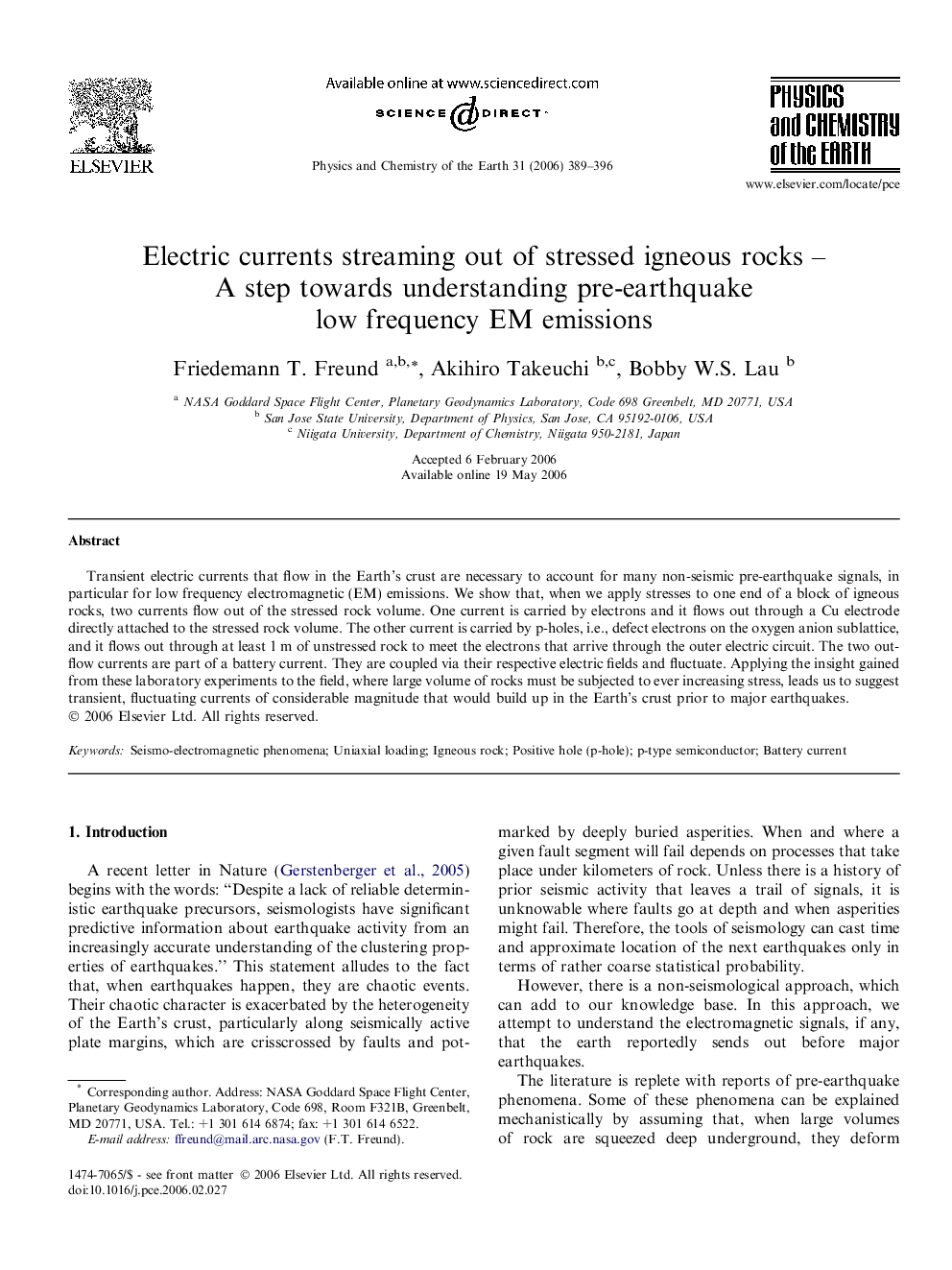| Article ID | Journal | Published Year | Pages | File Type |
|---|---|---|---|---|
| 4721886 | Physics and Chemistry of the Earth, Parts A/B/C | 2006 | 8 Pages |
Transient electric currents that flow in the Earth’s crust are necessary to account for many non-seismic pre-earthquake signals, in particular for low frequency electromagnetic (EM) emissions. We show that, when we apply stresses to one end of a block of igneous rocks, two currents flow out of the stressed rock volume. One current is carried by electrons and it flows out through a Cu electrode directly attached to the stressed rock volume. The other current is carried by p-holes, i.e., defect electrons on the oxygen anion sublattice, and it flows out through at least 1 m of unstressed rock to meet the electrons that arrive through the outer electric circuit. The two outflow currents are part of a battery current. They are coupled via their respective electric fields and fluctuate. Applying the insight gained from these laboratory experiments to the field, where large volume of rocks must be subjected to ever increasing stress, leads us to suggest transient, fluctuating currents of considerable magnitude that would build up in the Earth’s crust prior to major earthquakes.
